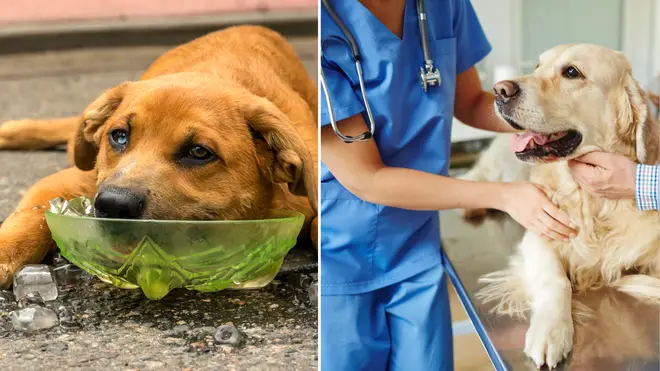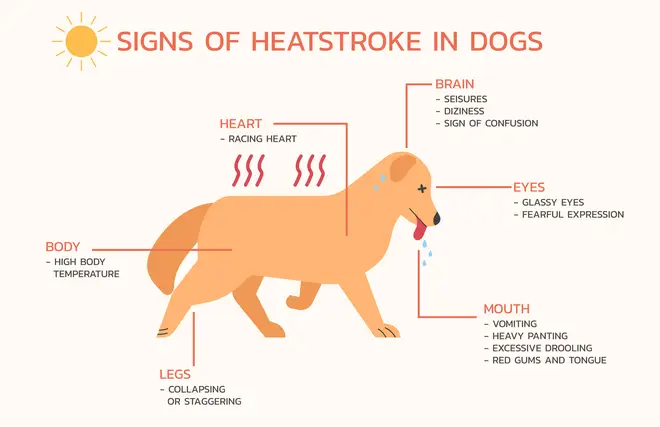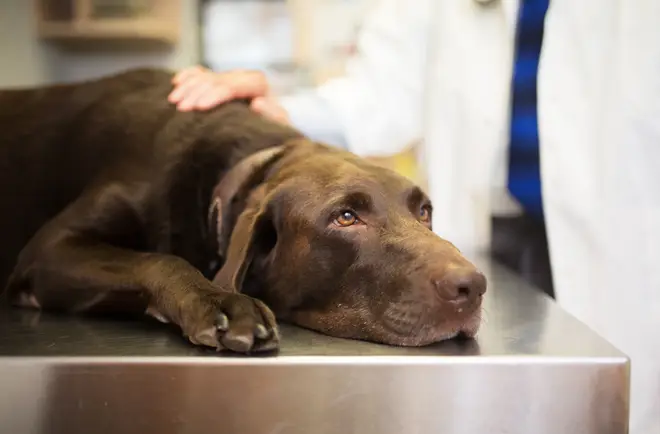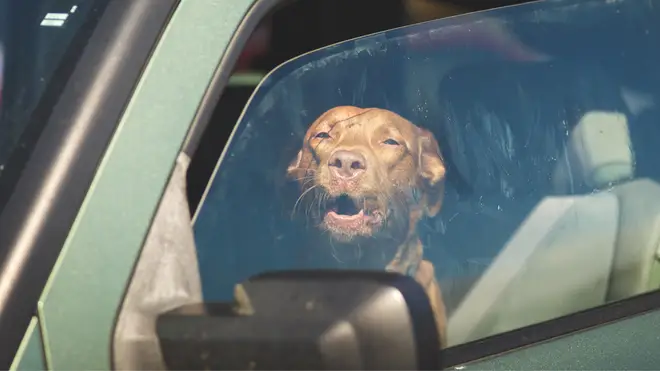What are the signs of heatstroke in dogs and how do I treat it?
13 July 2022, 11:48 | Updated: 13 July 2022, 11:59

How to recognise heatstroke in your dog and what to do in an emergency.
As parts of Britain continue to endure sweltering temperatures amid the heatwave, dog owners are being warned to keep a close eye on their furry friends.
With hot weather comes the risk of dogs falling victim to heatstroke, which can ultimately kill them.
It is important that dog owners do all they can to keep their canines safe during the rising temperatures; this can include keeping them hydrated, not walking them on hot days and keeping them in the shade.
Dog owners should also be able to recognise the signs of heatstroke in their dog so they can act fast and potentially save the pet's life.

What are the signs of heatstroke in dogs?
Heatstroke can be fatal to dogs, so it's important to know the signs and first aid. Some of the signs to look out for include:
- Heavy panting
- Red eyes
- Red gums
- Hot skin
- Reduced activity
- Vomiting
- Collapsing
- Diarrhoea
- Excessively drooling
- The dog appears lethargic, drowsy or uncoordinated
- Difficulty breathing

What do I do if my dog has heatstroke?
According to information from the RSPCA, dogs suffering from heatstroke urgently need to have their body temperature lowered gradually for the best chance of survival. This is what they say you should do:
- Move the dog to a shaded and cool area
- Immediately pour cool (not cold to avoid shock) water over the dog. Tap water (15-16°C) has been found to be the most effective at cooling dogs with heat-related illnesses. In a true emergency, any water is better than nothing.
- Wet towels placed over the dog can worsen the condition, trapping heat. In mild cases towels can be placed under the dog, but never over, and in a true emergency water immersion or pouring water with air movement is ideal
- Allow the dog to drink small amounts of cool water
- Continue to pour cool water over the dog until their breathing starts to settle, but not too much that they start shivering
- Dogs that have lost consciousness will stop panting, despite still having a very high temperature, these dogs require urgent aggressive cooling as a priority
- Throughout the treatment of heatstroke try to avoid pouring water on or near your dog's head, as there is a risk of them inhaling water which could lead to drowning, especially for flat-faced and unconscious dogs.
- Once the dog is cool, take them to the nearest vet as a matter of urgency
- Some types of dogs are more prone to heatstroke, like very old or young dogs, dogs with thick, heavy coats or dogs with very short flat faces like pugs and bulldog types. Dogs with certain diseases or on some types of medication are also more at risk.
For more information, visit the RSCPA website here.

More information to consider
- Some dogs are more at risk of heatstroke than others, for example flat-faced dogs, young dogs, old dogs, long-haired dogs and obese dogs
- A lot of heatstroke cases in dogs are caused by poor care from the owner, most specifically when owners leave their dogs in cars, do not provide them with enough water or take them for a walk in the hot weather
- During hot days, make sure your dog is in a well ventilated area with access to plenty of shade and water
- Monitor your dog's exercise in the hot weather, the more they run around the hotter they will get
- Avoid walking your dog during hot days, but if you must, take them out before 8am or after 8pm
Read more:
- When is it too hot to walk your dog?
- RSPCA issue 'silent killer' warning to all dog owners this weekend
- What should I do if I see a dog locked in a hot car?































